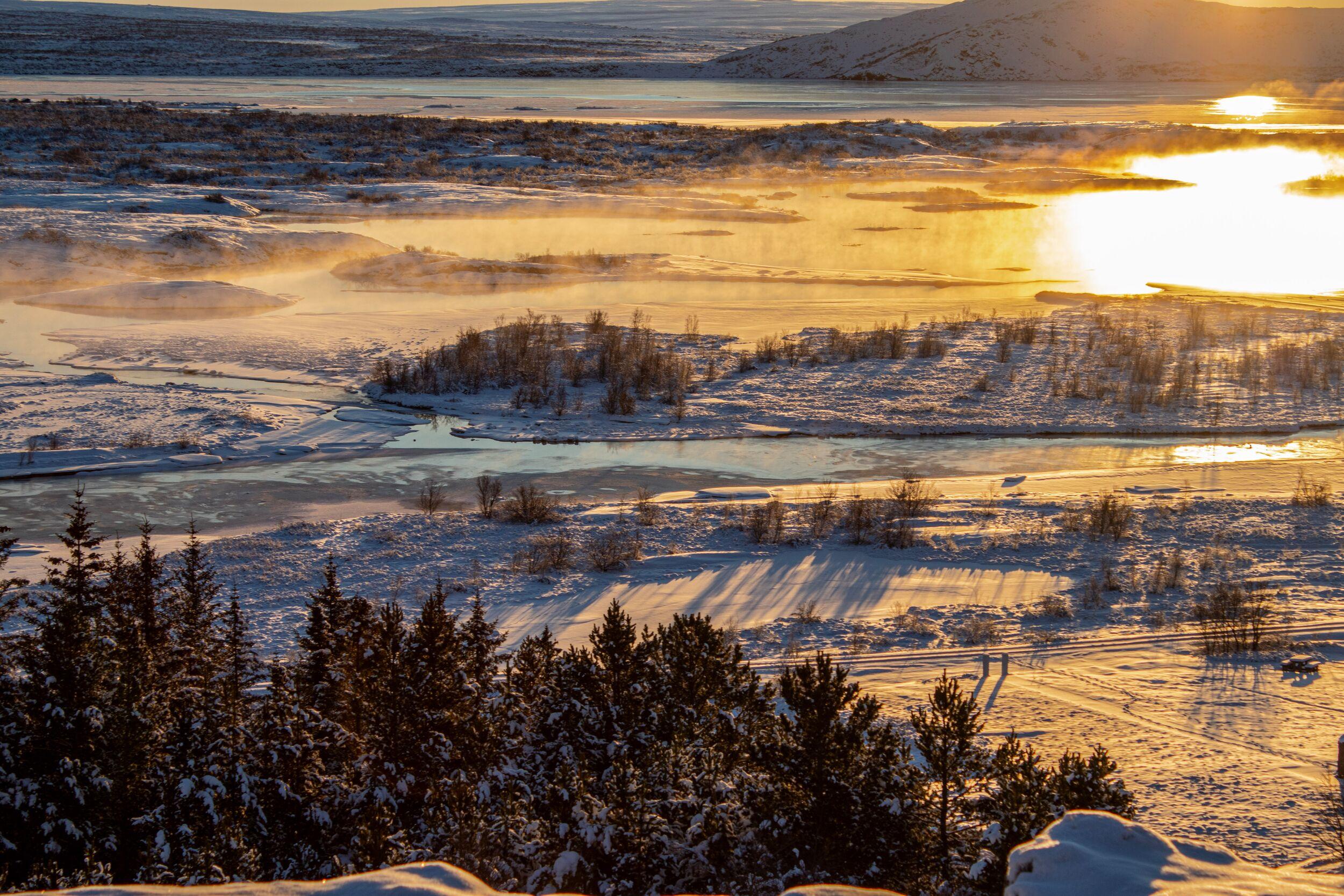What it's really like in Iceland in November: Weather, Daylight & Things to Do
Table of Contents
- 1Weather in Iceland in November
- 2Daylight and how that is likely to impact your sightseeing plans
- 3Advantages of travelling in November
- 4Must-do year-round and seasonal activities for November
- 5Essential sightseeing tours if you’re coming to Iceland in November
- 6What can't you do in November in Iceland
- 7How to prepare for your November trip and what to pack
- 8FAQ about the weather in November
Weather in Iceland in November
Iceland’s November weather can be a bit hit and miss. Given its North Atlantic location, the country’s weather is unpredictable at the best of times. Though it’s unusual, you might even experience snowfalls in June; wild and windy weather is just something Icelanders deal with year-round and November’s no exception.
So here’s the thing: if you come to Iceland in summer expecting the warm, sunny weather that’s typically the case in mainland Europe, you might face rain or overcast skies instead. And if inclement weather is a distinct possibility, you could argue that paying a premium to travel here during peak season isn’t as logical a choice as it might be elsewhere.
Temperatures aren’t as cold as you might think for a place this far north. Normally, in Reykjavik they fall in the range of about -1°C to 4°C; generally speaking, the north is slightly colder. As long as you come prepared, it’s not too unpleasant to be outside for extended periods, so tours and outdoor activities are very much still a possibility.
November is one of the wettest times of the year, though on average you’ll still experience 10 dry days a month in the capital. You might encounter rainy days, but also sleet and snow are a real possibility. Basing yourself in Reykjavik makes a lot of sense as there are plenty of indoor attractions within the charming downtown area.
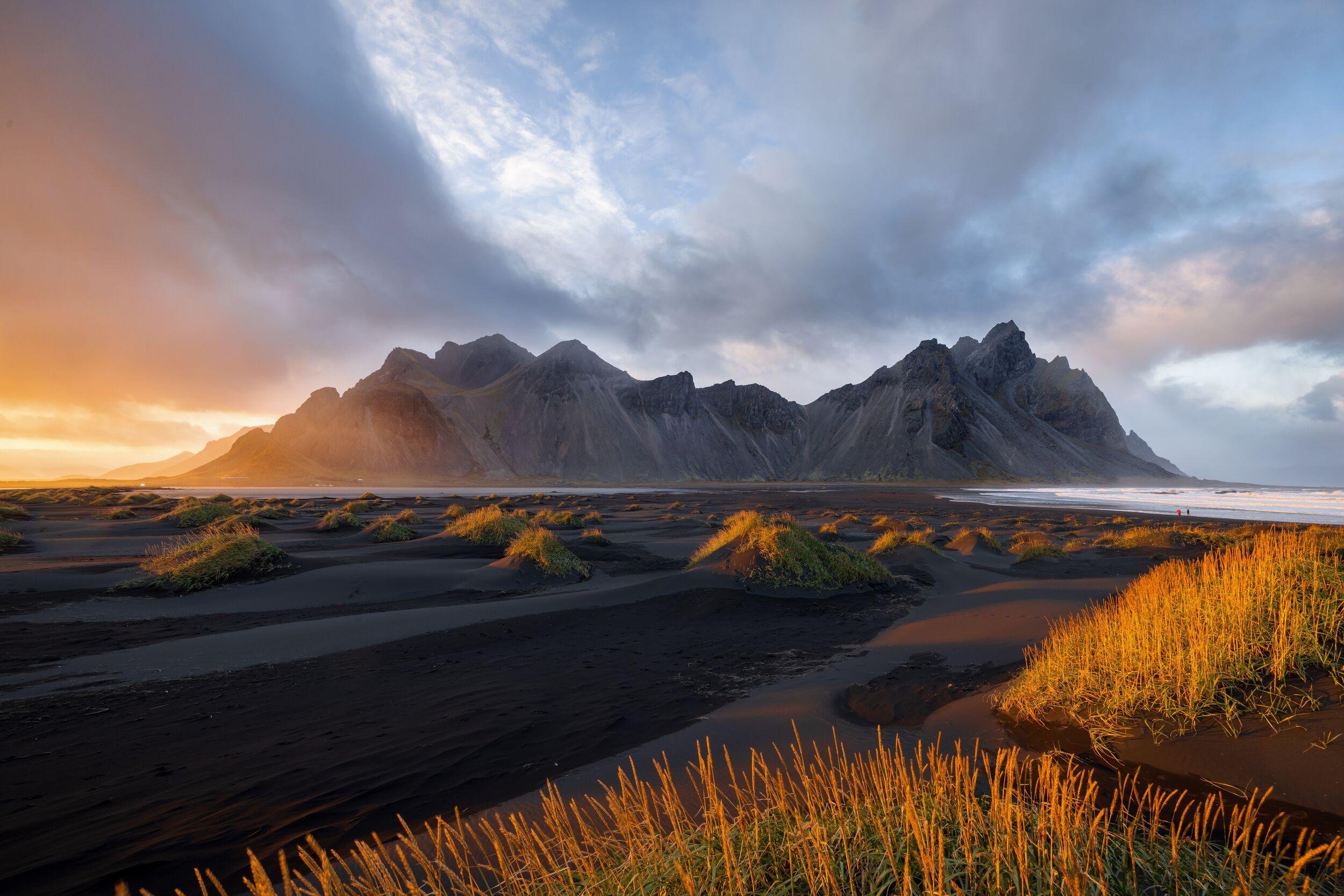
Daylight and how that is likely to impact your sightseeing plans
The weather isn’t the only factor to consider when planning your trip. In Iceland, daylight hours in November need to be taken into account as this varies considerably from season to season. One important thing to note when pinning down the dates you intend to travel is the remarkable difference in sunrise and sunset times when you compare the beginning and end of the month.
On November 1st, sunrise in Reykjavik is at 9.11am. That means if you’re planning to sightsee, it will probably be light as you finish breakfast and set out for the day. Sunset on this day takes place at 5.09pm just as you’re wrapping things up and returning to the city for dinner.
By the end of the month, it’s a very different story. Sunrise is much later, occurring at 10.43am. If you’re off sightseeing, some of the journey out to the south coast or even the Golden Circle could take place in the dark. Nevertheless, you’ll still have ample daylight once there to enjoy what you’ve come to see.
Sunset’s earlier too, at 3.48pm on the 30th which means you’ll need to make the most of those daylight hours while you can. That said, at the end of a day tour, a dark sky might be a plus in these parts. You can settle back and enjoy a display of the northern lights if you're lucky or have a power nap as the driver navigates their way safely back to Reykjavik.
Advantages of travelling in November
Flights are cheaper
Though the weather can be a bit of a gamble and you’ll need to plan your sightseeing tours and activities around the shrinking amount of daylight, there are actually some strong reasons to consider a trip to Iceland in November. As this is considered off-peak, flights tend to be much cheaper than in July and August.
Accommodation’s more affordable
Similarly, as there is a lower demand for accommodation, prices are also often significantly lower than in summer. Don’t underestimate the impact such affordability can bring. For instance, if an upscale or centrally located hotel is outside your budget in peak season, travelling in November opens up the possibility of taking advantage of cheaper rates.
Experience a music festival
November’s also when Reykjavik hosts Iceland Airwaves, a longstanding festival that attracts thousands of music lovers. They flood into the capital to see emerging and established artists who perform across the downtown area in a diverse array of venues: bars, music stores, museums, clubs and churches. It’s the ideal way to round off your day in the city after a day out sightseeing.
Advent kicks off
Towards the end of the month, Advent celebrations begin. There’s an outdoor ice rink in Ingólfstorg square and Christmas markets appear, such as the one at Austurvöllur. Decorations and twinkling lights bring some festive cheer to the streets – be sure to track down the Christmas cat, which represents a uniquely Icelandic tradition.
Be sure to track down the Christmas cat, which represents a uniquely Icelandic tradition.
Must-do year-round and seasonal activities for November
Visit an ice cave
For ice caves in Iceland, November signals the start of the new season. While the Katla ice caves and the artificial cave under Langjökull can be accessed year-round, those beneath Vatnajökull are seasonally open. November’s decreasing temperatures help stabilise these exquisite yet dynamic spaces, and as the ice freezes hard, it’s possible to enter once more. The glittering, translucent blue walls and ceilings make such ice caves a jaw-dropping sight.
Join a Northern Lights hunt
Northern Lights season is well underway by November. As sunset falls earlier, you’ll be able to set out in search of the aurora earlier in the evening as the skies will already be darker. Take a guided tour out into the countryside to improve your chances of success on a clear night. When the pretty green and purple ribbons and curtains dance across the sky, seeing the Northern Lights in November in Iceland is sure to be a highlight of your trip.
Go whale watching
Whale watching is a year-round activity in Iceland as some cetaceans inhabit areas close to the coast. Humpbacks, minke whales, white-beaked dolphins and harbour porpoises for instance are common visitors to Faxafloi Bay and boats depart conveniently from Reykjavik’s Old Harbour on a daily basis so long as weather conditions permit.
Ride an Icelandic horse
Even if you are a complete novice, seize the chance to ride an Icelandic horse. Known for their shaggy coats and long flowing manes, breeding is carefully monitored to ensure these beautiful horses remain thoroughbreds. On a typical one or two hour tour, you’ll have the opportunity to ride out into the countryside or along the beach and try out the famous tölt, the smooth yet fast fifth gait that’s unique to Icelandic horses.
Relax in a geothermal lagoon
If merely the thought of heading outside in your swimsuit in November has you shivering, think again. Iceland’s geothermal lagoons are very much a year-round pastime and you won’t want to miss out on the experience. Several of the country’s most iconic and luxurious baths – among them Blue Lagoon, Sky Lagoon, Hvammsvik Hot Springs, Krauma and Laugarás Lagoon – are located within easy reach of downtown Reykjavik, so booking a slot with included transfers or visiting as part of a guided tour is absolutely possible.
Essential sightseeing tours if you’re coming to Iceland in November
Experience the Golden Circle
Iceland in winter shoulder season looks magical in the soft light or under a dusting of snow – and that’s most certainly the case if you encounter such conditions while touring the Golden Circle with us. Seeing Strokkur geyser erupt under a clear November sky or watching water tumble over Gullfoss waterfall surrounded by a white landscape will definitely have you reaching for your camera.
Venture along the South Coast
The south of Iceland is generally rainier and windier than the Reykjavik area but if you have a promising weather forecast the striking scenery of this part of the country is a must. Visit the impressive Seljalandfoss and Skógafoss waterfalls and admire dramatic Reynisfjara beach. This is a region where you can’t miss the imposing glaciers – why not book a guided hike or venture inside an ice cave?
Tour the Snæfellsnes peninsula
The west of Iceland is also achievable as a day trip from Reykjavik and a great option for those that prefer a more quiet experience. Join a tour to loop the fabulous Snæfellsnes peninsula with landmarks such as the wave-cut landforms of Arnastapi and photogenic Kirkjufell. This tour travels a road less traveled if you compare it to the very popular Golden Circle but retains most of the amazing scenery you expect from an excursion in Iceland.
What can't you do in November in Iceland
As we’ve demonstrated, there are a lot of activities and sightseeing that can be done if you’re planning November travel in Iceland. However, there are a couple of significant omissions. Firstly, don’t come at this time of year in the hope of seeing puffins: they’re long gone and won’t return to Icelandic shores until April. They spend the winter out on the ocean far from land.
Unless you plan to book a super jeep tour, venturing up to the Icelandic Highland region isn’t an option either. You might prefer to save that part of the country for a summer trip when you can catch the Highland Bus up to colorful Landmannalaugar or verdant Þórsmörk when they’ve shed their winter blankets of snow and look spectacular – both are renowned for their extraordinary scenery.
Firstly, don’t come at this time of year in the hope of seeing puffins: they’re long gone and won’t return to Icelandic shores until April.
How to prepare for your November trip and what to pack
Preparing properly for your trip to Iceland in November is a must. It’s crucial to get the logistics right and pack the right kind of clothing to ensure you stay comfortable no matter what Iceland’s November weather throws at you. It helps to expect the unexpected and embrace any unforeseen situations as simply part and parcel of a trip to this extraordinary country.
Be flexible
Staying as flexible as possible, particularly where some tours are concerned, helps ensure you don’t miss out on a bucket list activity. For instance, plan your Northern Lights tour for as early in your stay as possible. These may have to be postponed if the forecast is for cloudy skies, but reservations are bumped to a subsequent night. It’s a similar situation with whale watching trips which may be rescheduled if it’s very windy.
Allow some free time in your schedule
It’s worth building in a contingency day or two if you’re travelling to Iceland in November. This means that if a tour is postponed or inclement weather necessitates a last minute change of plans you have space in your schedule to move things around. If you’re blessed with fine weather, embrace the chance to add an extra day’s activities or tour onto your itinerary – it’s often possible to make a late booking as November isn’t peak season.
Choose tours over winter driving
If you aren’t used to wintry driving conditions, you may prefer to take tours rather than self-drive in a rental car. Road conditions in Iceland in November can be challenging. Icy surfaces coupled with strong winds can make driving daunting, even with a 4x4. Forecasting conditions accurately well ahead is pretty much impossible, so many travelers opt to take tours at this time of year and cut out the stress. If you do venture out on your own, be sure to keep a close eye on SafeTravel, the official source of safe travel in Iceland, run by the Icelandic Association for Search and Rescue, i.e. our heroes.
Combo tours
You’ll find a wide selection of sightseeing tours on our website. These can often be combined with activities such as glacier snowmobiling, a visit to a geothermal lagoon or Northern Lights hunts. Some activities can be added onto the main body of a tour, while for others you’ll transfer seamlessly from one vehicle to another at the BSI bus terminal back in Reykjavik.
Pack all-weather gear
As Iceland’s weather in November is changeable, make sure you pack for all types of weather. In short, you’ll need to keep out the cold with warm layers and make sure your jacket and trousers are both waterproof and windproof. Don’t forget your extremities; bring a decent pair of boots with a thick sole to insulate you from cold pavements or paths and warm socks. A hat, gloves and scarf are also a must.
A visit to Iceland in November might fall in shoulder-to-low season, but actually it’s a great time of year to have a memorable Icelandic adventure. With our wide range of tours and activities to fill your days coupled with a Northern Lights hunt, geothermal lagoon soak and of course the charm of Reykjavik to enjoy in the evening, you’ll have all the ingredients to make this the holiday of a lifetime.
FAQ about the weather in November
November temperatures in Iceland usually range from –1°C to 4°C (30°F to 39°F). It can feel colder due to wind and humidity, especially along the coast.
In early November, Iceland gets about 8 hours of daylight, while by late November it drops to around 5 hours. The sun typically rises after 9 a.m. and sets before 5 p.m. near Reykjavik.
It depends on conditions. The Ring Road is generally open, but snow, ice, and wind can make driving challenging. 4×4 vehicles and flexible itineraries are strongly recommended. Highland and interior routes are closed.
The North and East Fjords tend to see more snow and icy roads, while the South Coast and West Iceland (including Snæfellsnes) are typically more accessible. The Highlands are closed to all general traffic.
Popular November tours include Northern Lights excursions, glacier hikes, ice caving, South Coast and Golden Circle day tours, and visits to geothermal lagoons. Whale watching and horseback riding also operate year-round.
Dress in warm, waterproof layers: a thermal base layer, fleece or wool mid-layer, and a wind- and waterproof outer shell. Bring hat, gloves, scarf, insulated boots, and crampons for icy conditions.
November offers excellent aurora visibility if skies are clear. Long nights and regular solar activity make it one of the better months for Northern Lights — though visibility always depends on cloud cover.
Yes. Most day tours and attractions remain open, especially around Reykjavik, the South Coast, and West Iceland. Some summer-only tours (like Highland treks or river rafting) are paused until spring.
Pros: Fewer tourists, lower prices, Northern Lights, and wintry scenery.
Cons: Short daylight, unpredictable weather, and limited access to remote regions.
Check safetravel.is, road.is and vedur.is daily for road and weather updates. Plan shorter driving days, allow buffer time, and carry snacks, warm layers, and a full tank when traveling outside urban areas.
Recommended tours
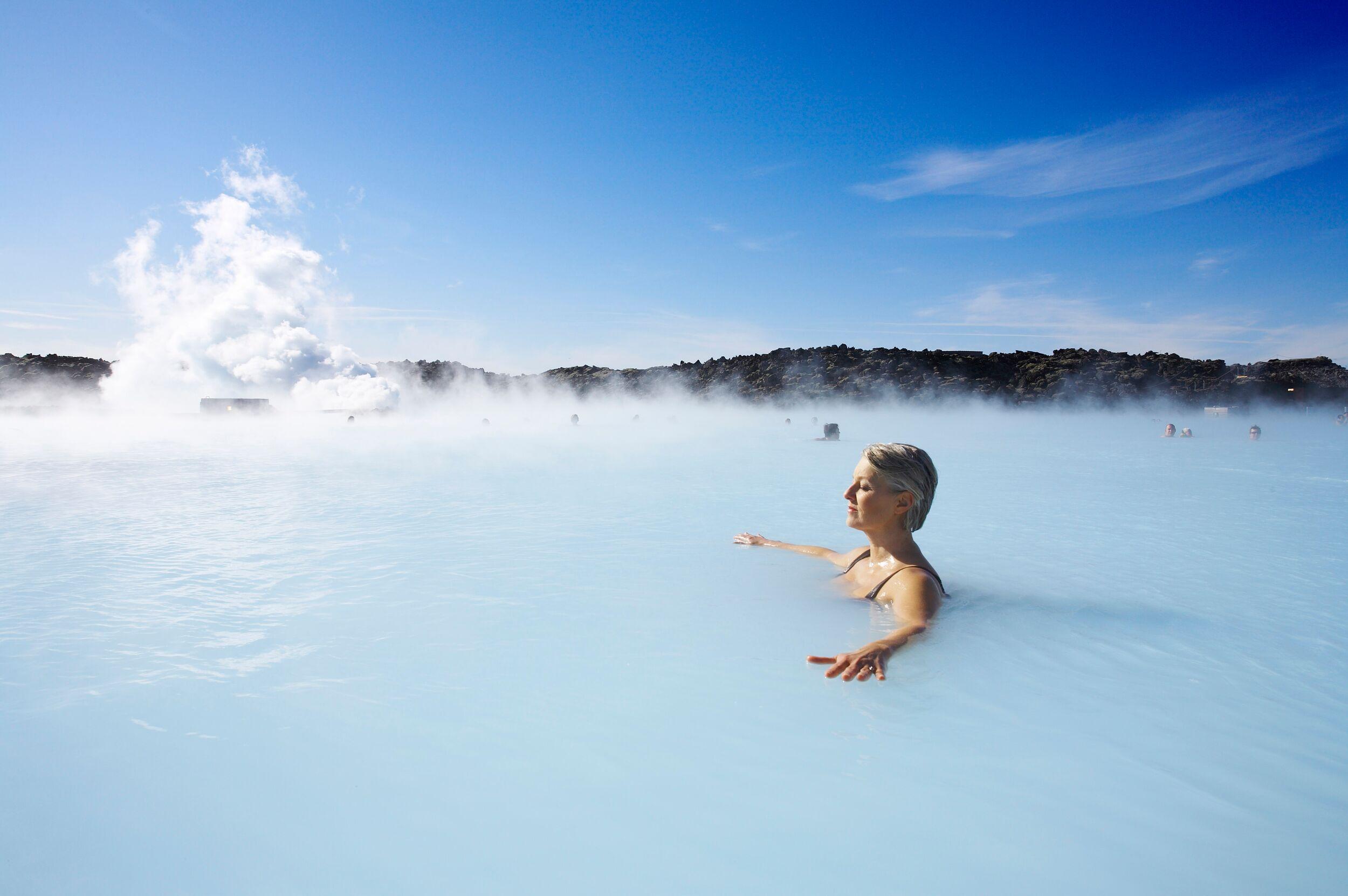
- Best seller
- Popular
Blue Lagoon & Northern Lights
Enjoy a perfect winter day in Iceland! Experience the best of Iceland with this package of two of the island’s most popular tours in one day! Soak in the milky blue healing water of the Blue Lagoon, which is one of Iceland's most famous tourist attractions and is considered by many to be a once-in-a-lifetime experience and an unmissable part of a visit to Iceland. After your return to Reykjavík, a guide will lead you on a search for the elusive northern lights! Watching the lights dance and flicker in the sky, changing shape and colour, is incredible. Prepare to be dazzled!
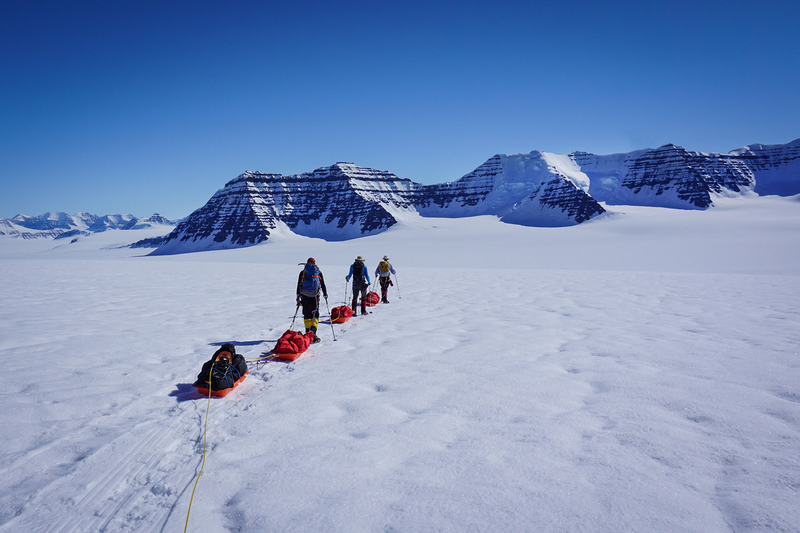
Mt Gunnbjörn, the Highest Peak in Greenland
Are you dreaming of an Arctic adventure of a lifetime? This 5-day tour has you scaling the highest peak of the Arctic (3694 m/12120 ft). Mt. Gunnbjörn has been called the 8th continental peak due to its massive size, and it beckons climbers from around the world. On the east coast, where towering mountains rise from the Greenland icecap, the conditions are pristine and similar to those in Antarctica. There’s nothing quite like challenging yourself to climb in one of the most isolated areas of the north, with the fresh Arctic air and stark white snow. An experienced and qualified guide will lead the group, keeping participants safe and informed. This is not a trek for a beginner as the hike is considered strenuous, and participants should have mountain climbing experience and be prepared to camp for four nights. Mt. Gunnbjörn is easily accessible on a ski plane from Iceland. Once in the Watkins Mountains, we set up a comfortable base camp at the foot of the mountain. To make the summit day more manageable, we establish one camp on the way to the summit. The climb can be done on snowshoes, with the last part done on crampons.
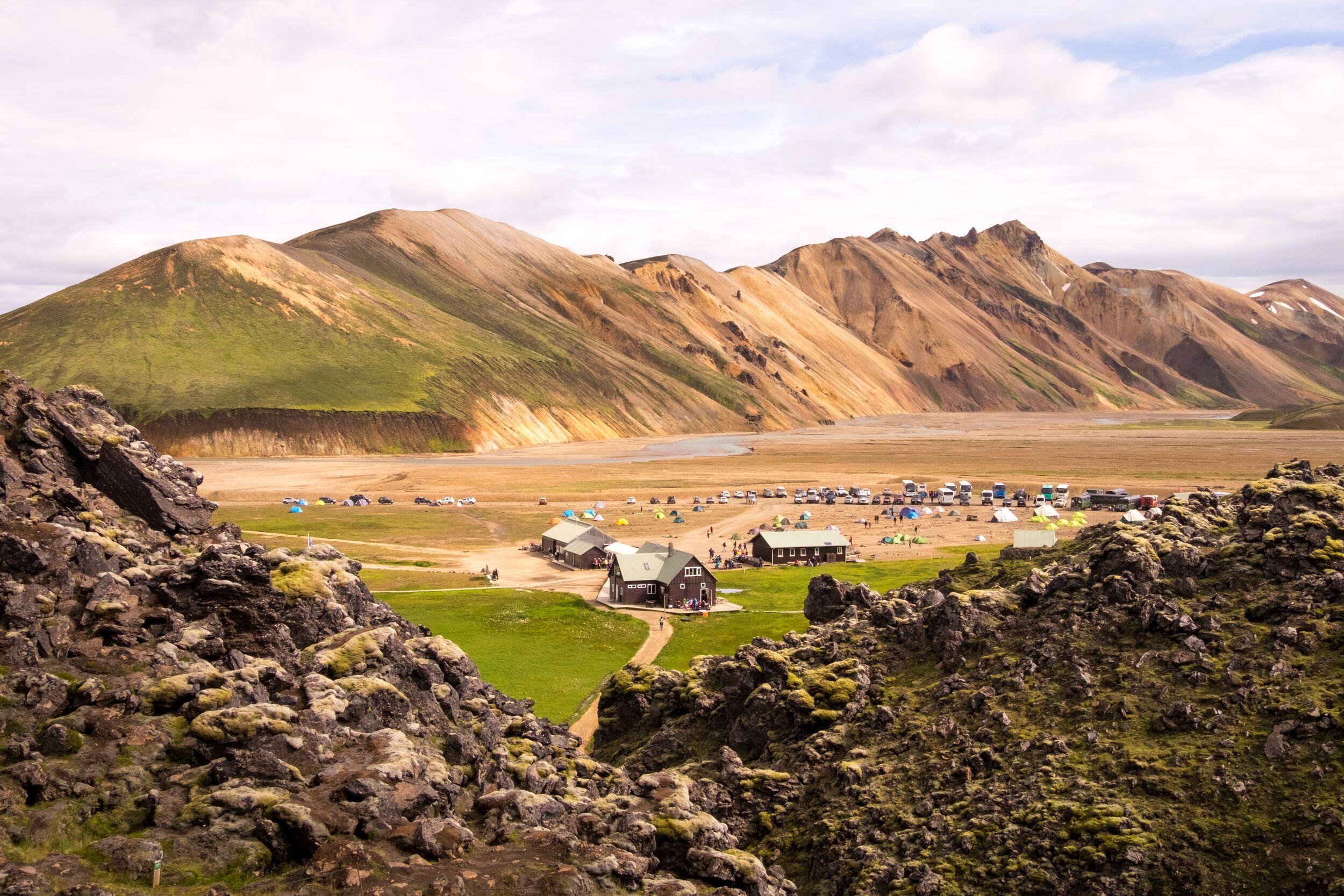
Highland Bus - Reykjavík to Landmannalaugar
The highlands are spectacular. If you’ve seen a picture of multi-coloured mountains in what seems to be a vast, remote wilderness in Iceland, it’s probably from Landmannalaugar. This region of Iceland is a hiker’s paradise, with hiking trails along rhyolite mountains, natural geothermal hot springs and wide-open spaces. If you are planning to hike Landmannalaugar and/or the Laugavegur Trail, leave the driving to us and hop on the highland bus!

- Limited availability!
Iceland Eclipse 2026 Tour – Chasing the Best Conditions for Totality
Experience the Iceland Eclipse 2026 on a carbon-neutral tour! With no fixed route, we’ll chase the best possible viewing conditions within the path of totality based on real-time weather forecast. Witness totality from Iceland’s most epic landscapes! Seats are limited, secure your spot for this once-in-a-lifetime event!


